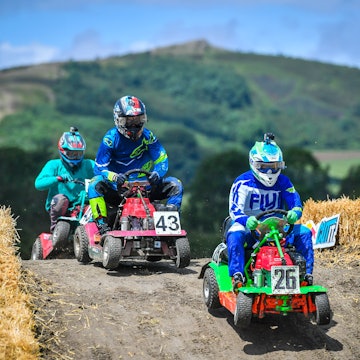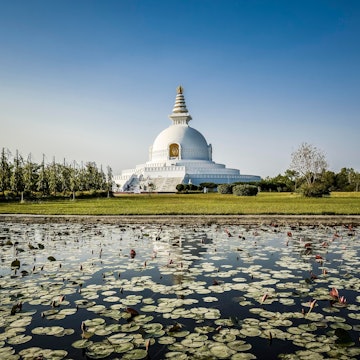

The ghats of Varanasi. mazzzur/Getty Images
India all but overflows with one-of-a-kind experiences, cultures, landscapes, cuisines and religions.
If you can think of it, chances are that India has it. In fact, some superlative version of it. A gigantic salt desert. The largest river island. The world’s largest floating park. A village that disappears in the monsoon and reappears in summer. A park with white tigers. A city of lakes. These are but some of the unforgettable places and experiences to be found here.
It’s simply not possible to soak in the incredible scope of this continent-size country – where the culture, language and landscape changes every few miles – in just one trip. (Or, for that matter, just one lifetime.) So as a traveler, you’re best off picking a region or a state and dedicating time to exploring it for as long as you can stay.
Unsure of where to start? Here are some of the top places to visit in India.
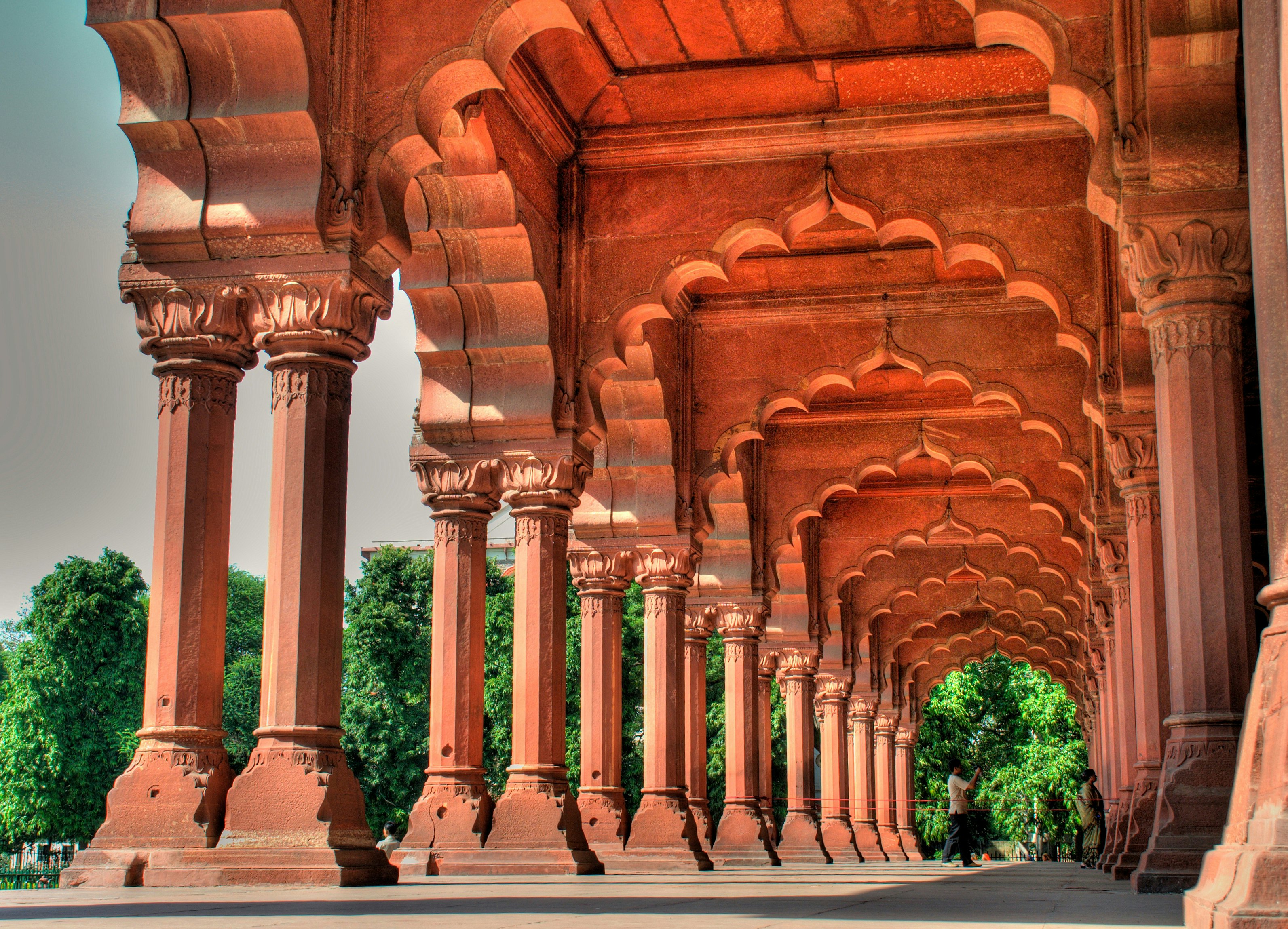
1. Delhi
Best for history and architecture buffs
India’s historic capital region is the starting point of India’s most popular tourist circuit: the Golden Triangle, linking Delhi, Agra and Jaipur. Both a major metropolis and a Union Territory of its own, Delhi comprises Old Delhi (aka Shahjahanabad) and British-built New Delhi, India’s capital. Centuries of major events have taken place in its streets, and if you walk almost anywhere in Old Delhi or New Delhi, you’re likely to come across a historic building, ancient monument, or timeworn tomb, mosque or fort.
Topping the short list of must-sees are Mughal- and Delhi Sultanate–era buildings such as UNESCO World Heritage–listed Humayun’s Tomb in Nizamuddin; the Qutab Minar in south Delhi; the Jama Masjid and Red Fort in Old Delhi; and the Jantar Mantar observatory in New Delhi. Also make time for the 1980s Bahai House of Worship (Lotus Temple) and elegant, British Raj–era India Gate, at the heart of Delhi’s government district.
Delhi is intense and chaotic but always interesting, and it's home to some of the finest cuisine (and street food) in the country. This is also a city that comes up trumps when it comes to entertainment – a visit to the bars and cafes of Hauz Khas Village in the evening will prove that point. And Delhi's markets – Karol Bagh, Janpath, Paharganj, Sarojini Nagar, Khan Market and Chandni Chowk – are great for picking up souvenirs and affordable fashions.

2. Darjeeling, West Bengal
Best for tea and toy trains
The former summer capital of the British Raj, the hill station of Darjeeling is nestled in the foothills of the Himalayas. Kanchenjunga (Khangchendzonga) – the world's third-highest mountain at 8586m – looms benevolently over this lovely city, with its silver fir forests, meandering roads, lush tea gardens and plunging valleys.
As well as seeing relics of British colonialism, you can take a camping trek to the Singalila National Park, check out the Himalayan Mountaineering Institute (where Tenzing Norgay was once director), climb up to Tenzing Rock, shop and promenade on the Mall and sample some of India’s finest brews at one of the city’s many tea estates. For a more spiritual experience, seek out peace at the Japanese Peace Pagoda; the Ghum, Dali and Bhutia Busty Buddhist monasteries; or the Mahakal Temple on Observatory Hill, where Hindu and Buddhist deities reside together.
However, the pride of Darjeeling is the narrow-gauge “toy train” that travels along the Darjeeling Himalayan Railway. This UNESCO World Heritage–listed route runs downhill to New Jalpaiguri (NJP) to connect with trains from Kolkata. Most tourists focus on the short leg involving a steam locomotive, between Darjeeling and Ghum.
Detour: For a change of scene, more beautiful hill stations surround Darjeeling, such as Kalimpong, Kurseong and Mirik – all accessible by shared 4WD.

3. Varanasi, Uttar Pradesh
Best for spirituality and street food
Perhaps India’s most sacred city, Varanasi is where you go for a dose of spirituality. Located on the banks of the holy River Ganges (Ganga), the city’s riverside ghats play host to thousands of pilgrims, who gather to bathe and seek redemption, cremate the dead and partake in rituals. In one day, you can observe the whole cycle of life and death play out on the banks of the river.
The Ganga aarti ceremony, traditionally conducted at dusk, is an incredible visual spectacle. Many visitors also gather to watch – respectfully – the funeral services at Manikarnika Ghat. A walk through the city behind the ghats will introduce you to historic buildings such as Ramnagar Fort, the revered Kashi Vishwanath Temple, Alamgir Mosque and Man Mandir Observatory. The Buddhist pilgrimage site of Sarnath, where the Buddha preached his first sermon, is a short drive outside the city.
Varanasi also has a thriving street food culture, Its tangled lanes and bazaars filled with vendors dishing out kachoris (fried stuffed pastries), chaats (savory snacks), jhal muri (puffed rice, vegetables and spices) and aloo puri (puffed flatbread with spiced potatoes).
Planning tip: Two souvenirs unique to the region are Benarasi paan (betel nut for chewing, with dried dates) and the Benarasi sari, woven from local silk with fine silver or gold brocade.
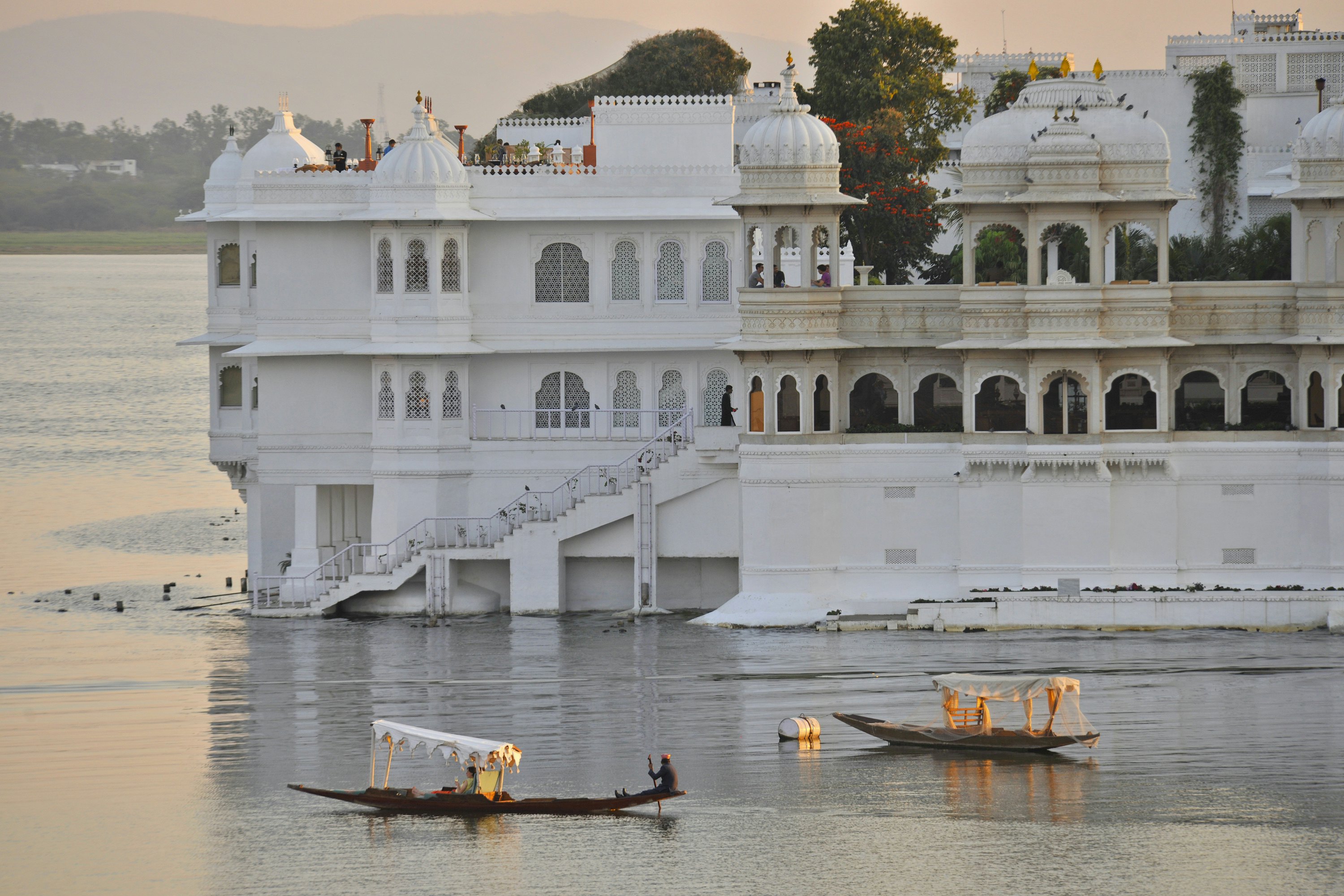
4. Udaipur, Rajasthan
Best for some lake therapy
Rajasthan doesn’t go light on the nicknames. If Jaipur is the Pink City and Jodhpur the Blue City, then Udaipur is the White City and the City of Lakes. (The last one is rather on the nose, as the city is indeed surrounded by seven lakes.)
There is so much to do in this vibrant city. Take in the view from the City Palace, then trek up to the Sajjan Garh Monsoon Palace overlooking Fateh Sagar Lake. Or take a boat ride on Lake Pichola to admire the city’s floating palaces – an experience that’s touristy, sure, but also highly recommended. Udaipur also has its own ghats, of which Gangaur is the most popular.
To get close to the city’s spiritual side, marvel at the intricate sculptures covering the Jagdish Temple, or take the ropeway to Karni Mata Temple, high above the lakeshore. By the water at Gangaur Ghat, Bagore Ki Haveli is a museum by day and a performance venue by night – come here in the early evening to see traditional Rajasthani dances.
Billed as a city of romance, Udaipur is understandably a popular site for weddings. If you're lucky, you may catch a baraat (bridegroom procession) or two while you’re in town.
Planning tip: Udaipur is packed with murals adorning its whitewashed walls. Set some time aside to wander the narrow streets and take in the intricate and colorful artwork and graffiti.

5. Goa
Best for relaxation
One of India’s smallest states, Goa is a top holiday spot thanks to its sun, sand, food and overall great vibes. Despite its tiny size, the state is a cultural powerhouse, with unique music, food, dance and architecture all influenced by four centuries of Portuguese colonial rule. Get a glimpse of this heritage at the ruined basilicas of Old Goa, at centuries-old Goan homes such as Figueiredo House and Palácio do Deão, and at concerts of fado and mando music.
Goa is blessed with a long, sandy coastline, and activities from water sports to yoga are centered on its beaches. Yet step away from the sand, and the hinterland reveals quiet villages with interesting local customs and festivals. Goa is also growing as a culinary destination, offering a taste of many different Indian and world cuisines and exciting new interpretations of local food.
Local tip: Consider several factors as you seek out your perfect Goa beach. North Goa has the parties and night markets, hippie culture, surfing schools, buzzing beaches, and hip new cafes and bars. South Goa is known for its natural beauty, quiet strands, wildlife sanctuaries (such as Bhagwan Mahavir near Molem, and Netravali near Palolem) and prehistoric sites such as Usgalimal.

6. Meghalaya
Best for natural beauty
This “abode of the clouds” in India’s often-overlooked northeast bespeaks the country’s enchanting natural beauty. Meghalaya is blessed with thundering waterfalls, green hills and an extensive network of caves and lakes – and relatively few people.
It’s a region ideal for those who love adventure, enjoy trying new and exciting cuisines, and want to understand India’s Adivasi (Indigenous) culture. Definitely make a stop at the village of Mawlynnong near the Bangladesh border, billed as one of Asia’s cleanest villages. The perpetually soaked village of Mawsynram, meanwhile, holds the record as the world’s wettest place.
Something you’ll find only in Meghalaya are the living root bridges. The Khasi people created these marvels of sustainable engineering by coaxing the roots of Indian rubber trees to intertwine, thus naturally forming spans across rivers. Reaching these bridges, especially the famous double-decker root bridge near Nongriat, requires some cardiovascular exercise. You can find more of these beauties around Dawki and Cherrapunji (Sohra).
Planning tip: Meghalaya is best explored toward the end of the monsoon, when the rain is receding but waterfalls are still in full flow. Public transport isn’t great in this small state, so hire a car and driver to get around.

7. Leh, Ladakh
Best for a taste of the mountain life
High in the Himalayas, Ladakh is blessed with stunning vistas, clear skies and dramatically picturesque mountain valleys. Consider the region the ideal spot for anyone looking to slow down, digitally detox and connect with nature.
Adventure aplenty lies in store in Ladakh. You can trek into the lofty Markham and Nubra Valleys, or attempt the climb up the highest trekkable peak in India, 6153m Stok Kangri. Ladakh’s twisting roads offer a uniquely thrilling experience to those seeking an epic road trip – especially the crossing over the Khardung La pass on the highest drivable road in the world.
Most visitors begin their journeys in Leh, a capital city blessed with a cool, dry climate and significant religious sites such as the Shanti Stupa and towering Leh Palace. You can learn about Tibetan and Buddhist culture at Ladakh’s many monasteries (try timeless Thiksey Gompa near Leh) or warm up with some traditional Ladakhi food – a unique mix of Indian, Tibetan and Nepalese culinary traditions.
Planning tip: Bear in mind that while summer is the best season to visit Ladakh, it’s also the most crowded time in Leh. In winter, many parts of Ladakh are closed, and road travel to Leh from Manali or Srinagar is usually only possible from April to November, when the high passes are clear of snow.

8. Kerala
Best for backwaters and beaches
A lush state that snakes along India’s southwestern coast, Kerala is blessed with beautiful beaches, placid backwaters (navigable inland waterways), rich wildlife and a diverse culture that more than justifies its celebrity status. Yet the steamy southern state offers more than just Ayurvedic massages. Onam, Vishu and other local festivals provide a taste of the state’s rich culture, in the form of dance and music, cuisine, handicrafts and martial-arts forms. Try to catch a performance of Kathakali or mohiniyattam dance.
If you’re lured to Kerala by the sand, the west coast is dotted with unspoiled beaches such as Kovalam and Varkala, while Alappuzha (Alleppey) is the gateway to backwater cruises by houseboat. To the east are hill stations such as Munnar, Wayanad and Thekkady, where tea, coffee and spice plantations sprawl luxuriantly across the hillsides. Sloth bears, Indian bison and tigers can be found in wildlife sanctuaries such as Mangalavanam Bird Sanctuary, Aralam, Neyyar and Begur, and in national parks such as the Periyar Tiger Reserve.
Planning tip: If you want to explore the historic port city of Kochi (Cochin) – and you should – time your visit to the Kochi-Muziris Biennale, a popular contemporary arts festival.

9. Odisha
Best for temples, arts and crafts
Lesser-known Odisha (formerly Orissa) has much to recommend it. As well as a rich religious heritage, the state boasts tasty (if little-known) food, Indigenous arts and crafts, natural beauty, thriving wildlife and fascinating tribal culture. The history of Buddhism in India is also on display at more than 100 sacred sites and historic monuments.
The state’s remarkable temples are of special appeal. Chief among them is the chariot-shaped Sun Temple at Konark, a marvel of Kalinga architecture. The coastal town of Puri is also home to major temples, including the Jagannath Temple, setting for a vast chariot festival known as Ratha Yatra in June or July.
Different regions in Odisha are popular for their arts and crafts. Cuttack is known for its silver filigree work, Raghurajpur for patachitra (cloth painting) and Pipili for appliqué work. Wildlife sanctuaries here offer different treasures: Gahirmatha is home to olive ridley turtles; Bhitarkanika shelters endangered saltwater crocodiles and herons; and Nandankanan has white and black (pseudo-melanistic) tigers.
Planning tip: There’s always a festival or fair happening in Odisha. Puri's Ratha Yatra attracts the biggest crowds, but the Konark Dance Festival in February and the Puri Beach Festival in November are popular as well.

10. Jaisalmer, Rajasthan
Best for desert romance
India’s so-called Golden City, Jaisalmer gets its gleaming color from the way the rays of the setting sun hit its sandstone buildings and the undulating sand dunes that surround them. The biggest attraction here is the living city inside Jaisalmer Fort. Inside, you will find havelis (traditional manors), royal palaces, timeless Hindu and Jain temples, and stalls selling an assortment of locally made artifacts, accessories, jewelry and paintings.
Away from the fort, explore Jaisalmer’s heritage in opulent historic homes such as Patwa’s Kotha Haveli (also a museum), and on visits to the five-story Tazia Tower in the Mandir Palace complex. Also make time for the sandstone cenotaphs at Vyas Chhatri, and the ancient stone buildings around the Gadisar and Amar Sagar Lake.
Planning tip: The Thar Desert’s most famous dunes are located on the outskirts of Jaisalmer. The Sam Sand Dunes and Khuri are the most popular spots, though overnight camel safaris that travel deeper into the desert will take you away from the crowds. For a comfortable overnight desert stay, book a night at one of the tented desert camps around Jaisalmer.
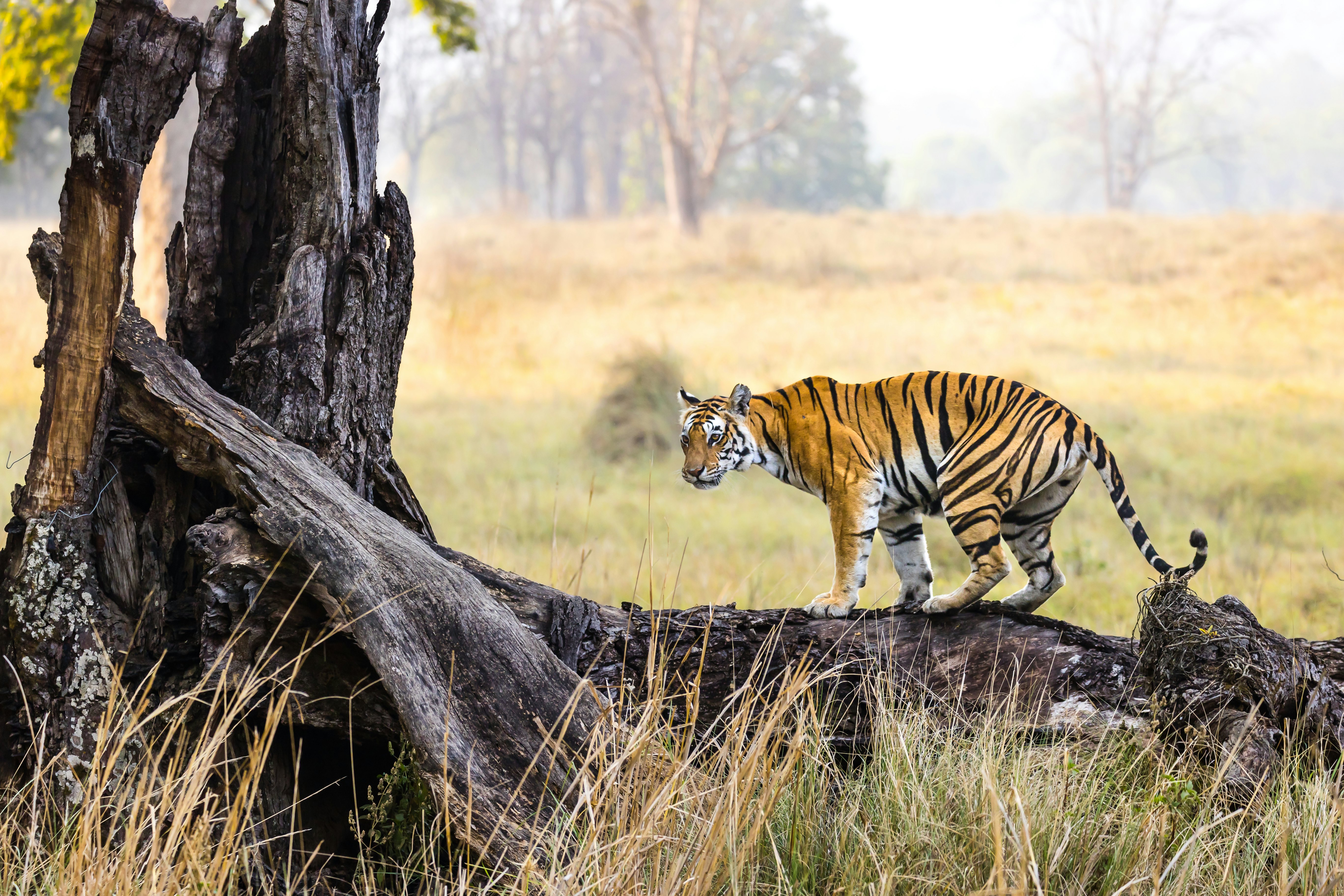
11. Madhya Pradesh
Best for spotting tigers
Smack in the heart of India, Madhya Pradesh is known as the “tiger state” given the density of those big cats in its parks, sanctuaries and reserves. It’s tough to choose between the state’s parks, many famed for their successful conservation efforts. As well as tigers, Kanha Tiger Reserve is a good spot to see the endangered barasingha (swamp deer). Bandhavgarh Tiger Reserve is famous for tiger sightings, while Pench has rare black leopards. Indian giant squirrels find a home in Satpura, while Panna is home to seven endangered species of vultures.
Beyond tigers, definitely set aside time to visit the heritage site of Khajuraho, whose architecturally rich temples are famous for their erotic sculptures. Other worthy stops in the state include the Buddhist pilgrimage site of Sanchi, and the rock shelters of Bhimbetka, which reveal traces of some of India’s earliest inhabitants.

12. Rann of Kachchh (Kutch), Gujarat
Best for desert colors and silence
This vast area of salt flats in the Thar Desert in Gujarat is one of the largest salt deserts in the world, and ideal for those who love photography and soaking in untouched (if rather austere) natural beauty. The Rann of Kachchh (Kutch) is also where you go to find wildlife such as migrating flamingos and the endangered Indian wild ass. Both can be seen in the Kutch Desert Wildlife Sanctuary and the Wild Ass Sanctuary. Learn about the Kachchhi people who live here and their embroidery traditions, and explore the archaeological site of Dholavira. Each winter, the government hosts the Rann Utsav festival, a carnival of arts, folk dance and music.
Detour: Another major festival in the Thar is the Pushkar Camel Fair in November, a huge annual camel showcase accompanied by a multi-day cultural fete, held in the sacred town of Pushkar, near Ajmer city in Rajasthan.

13. Agra, Uttar Pradesh
Best city for lovebugs
This historically rich city is a key stop on the Golden Triangle. Of course, the biggest reason to visit Agra is to see the Taj Mahal, justifiably one of the most famous structures in the world. Perhaps the most dramatic gesture of love ever undertaken, the monument was constructed by the Mughal emperor Shah Jahan as a tomb for his beloved wife Mumtaz Mahal. The ivory-colored marble mausoleum, with its delicate inlays of semiprecious stones, sits in a complex that also includes gardens, two mosques and a museum. It’s best admired at dawn or sunset, and the best views are across the river, from Mehtab Bagh Park.
Further down the river is the spectacular Agra Fort, an expansive red sandstone structure famed for its monumental Delhi Gate and private palaces and mosques. Agra is also famous for petha, a sweet treat made from candied white gourd and often bought as a souvenir (or for your beloved).
Detour: An hour’s drive away is another amazing historic site, Fatehpur Sikri, a ruined and ghost-haunted city that was once the capital of the Mughal Empire under the emperor Akbar.














